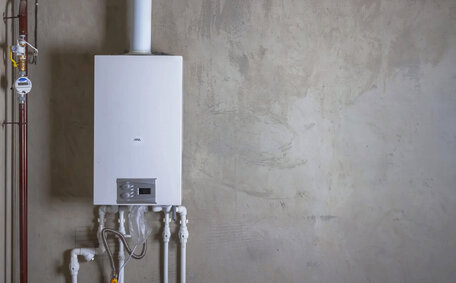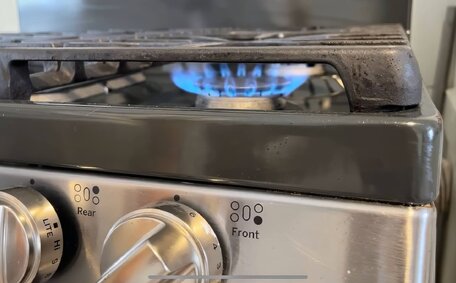The Dawn of Drainage: Ancient Systems and Innovations
Ancient civilisations near the Yellow River initiated drainage systems, utilising nearby water bodies to eliminate waste and secure clean water. Early engineers constructed dams and canals to regulate rivers, meeting both irrigation and drinking water needs. Clay pipes and covered ditches, predecessors to modern sewage systems, carried waste away from villages, vital for public health and community well-being.
By 3000 BCE, the Indus Valley Civilization had already integrated systematic drainage with water supply and flood control strategies. Baked clay pipes, which were pivotal in waste management, directed effluent downstream and multi-storey homes featured bathrooms with effective drains. Such attention to drainage and sanitation enabled the support of dense urban populations.
Ancient Greek and Roman cities also engineered drainage as populations grew. Both Greek and Roman engineers designed open canals and drainage tunnels to direct waste from growing cities into nearby waterways.
Advancements in drainage technology were paramount in facilitating the expansion of civilizations and highlight an era of significant water management development.
The Impact of Roman Engineering on Drainage
The Romans introduced groundbreaking advancements in drainage engineering. They introduced lead pipes for the first time, allowing water and waste to flow downhill through city streets. The Romans also developed primitive flush toilets, where lead piping was used and integrated elaborate baths and latrines into city planning.
By the 1st century BCE, Rome boasted nearly 800 kilometers of lead pipe aqueducts that transported water into the city. This fresh water, vital for the introduction of indoor plumbing, utilised for public baths, latrines, fountains, and private homes, reached the base level. Water waste drained from these fixtures into the famous Cloaca Maxima, a large tunnel sewer exiting into the Tiber River.
The Romans constructed aqueducts and sewers, particularly in newly settled, uninhabitable locations, showcasing their extensive drainage engineering works. It supported larger populations and improved sanitation and health. The pioneering Roman drainage systems remained unrivalled in size and sophistication until the 19th century.
Medieval Plumbing to the Modern Sewer System
After the fall of the Roman Empire, advancements in drainage and plumbing entered a stagnant period during the Middle Ages. Urban populations declined and infrastructure maintenance was neglected. Open sewage dumping was common, resulting in contaminated water supplies and diseases.
By the 13th century, renewed urban growth and unsanitary conditions sparked renewed interest in closed drainage systems. Ceramic pipe networks replaced the random dumping, thereby improving sanitation and public health. Yet, it wasn’t until the 19th century that drainage technology underwent a transformative leap.
The Industrial Revolution spurred massive urban population surges in cities like New York City, posing immense challenges for water supply and systematic waste removal. In locales like the badlands Perth Amboy New Jersey, outdated wooden drainage pipes raised concerns about contamination, reminiscent of past challenges where sewage compromised groundwater and led to public health crises.
In response, the sewerage system of London UK was constructed between 1859-1865 based on modern engineering plans. Over 1,100 miles of an innovative plumbing system were installed, using superior materials like cast iron and concrete. Storm drains and state-of-the-art treatment plants significantly enhanced water quality and flood control, showcasing how pivotal modern treatment plant design is within waste water drainage basins.
The London system set a benchmark, inspiring cities worldwide, including those in New Zealand, to adopt advanced plumbing, robust sewer networks and modern water treatment plants. By the early 20th century, the management of urban wastewater infrastructure with source control measures as part of a complex drainage network was standard in industrialised cities, including Chicago IL USA.
The Shift from Clay Pipes to Plastic
Wood and clay tiles were the main materials for drainage pipes for centuries. Clay pipes were inexpensive and simple to produce but had drawbacks like cracking. By the mid 19th century, iron pipes offered better durability but were costly to install.
Plastic piping, introduced in the 1950s, transformed drainage materials globally. Lightweight PVC plastic pipes were easy to manufacture, inexpensive and corrosion resistant. Compared to traditional materials, plastic improved flow efficiency, required simpler fittings and withstood tree roots and ground movement better.
Today, PVC and HDPE are the preferred materials for both main and subsidiary drainage system piping. Plastics have made installations faster, less susceptible to frost heaving, safer, and more accessible. Combined with computarised drainage modelling, modern systems are extremely sophisticated compared to early brick and clay networks.
Yet, plastics have their shortcomings – they have shorter lifespans than iron, and insufficient slopes can hinder drainage effectiveness. Composite pipes are now being developed to address these issues. Overall, this monumental shift has drastically altered the urban drainage pattern, culminating in a more streamlined system performance.
Managing Stormwater Runoff and Drainage
Managing stormwater runoff and maintaining an efficient sewage system poses a formidable challenge for contemporary urban centres, a topic studied by the American Society of Civil Engineers. As urban areas expand, the amount water runoff, due to the increase of impervious surfaces like concrete and asphalt, also increases. This prevents natural land drainage absorption into soil and leads to much higher stormwater volumes needing management.
Traditional systems, including sewage treatment, are designed to move stormwater away quickly. But with climate change causing more intense rainfall, these systems can overflow and cause flash floods and urban flooding. There is also less natural recharge of groundwater supplies.
Emerging strategies focus on mimicking natural drainage processes for sustainable urban water management. SuDS and WSUD integrate features such as rain gardens and porous paving to capture, filter, and moderate stormwater release, demonstrating WSUD’s effectiveness. This reduces pollution and downstream flooding while recharging groundwater.
These low-impact initiatives, supported by detailed data analysis, provide community green spaces and sustain urban stormwater management. Despite initial higher costs, the long-term benefits for environmental and property protection justify the expenditure. In the realm of planning design, integrating stormwater management into the essence of urban infrastructure is crucial for liveability and sustainability, a topic widely covered by many a university press.
Accommodating Population Growth and Urbanization
Rapid population growth and urbanisation, particularly notable in areas like Washington DC USA, have placed increasing demands on drainage agricultural lands worldwide. As metropolitan sprawl extends into agricultural land, the capacity of ageing networks is tested by the increased demands from rising waste volumes. This overloading can lead to substantial sewer flooding and contamination.
Contemporary drainage planning focuses on best management practices, integrating smart technologies and preparing for future needs. Gravity-based designs and pressurised mains have been deployed to manage high-density areas efficiently. Sophisticated computer modelling informs dynamic pipeline sizing and layouts.
Advanced real-time control systems use automation and sensor data to manage stormwater flows. Retention tanks, with a carefully calculated relief ratio, temporarily store excess volumes, preventing overload. Infiltration-based water sensitive urban design (WSUD) features further alleviate drainage demand in a sustainable way.
To improve resilience, new builds increasingly utilise durable materials like corrosion-resistant plastics. Deliberately designed redundancies help to eliminate any single point of failure within the network. Many cities now mandate periodic condition assessments to identify upgrading needs before problems emerge.
Holistic long-term planning for water resources is crucial as populations continue rising exponentially. Drainage authorities must take a proactive, adaptable and sustainable approach to match capacity to future demand. The systemic integration of smart technologies and fail-safe design principles can create drainage networks robust enough for coming decades.
The Rise of Sustainability in Drainage Systems
See how, as climate change brings more extreme weather events, drainage systems worldwide are evolving to align with sustainable urban development principles. There is a growing recognition that traditional concrete-heavy stormwater infrastructure contributes to problems like urban flooding and pollution.
In response, contemporary drainage design is embracing concepts like water sensitive urban design (WSUD) and low impact development (LID). These approaches aim to capture, filter and reuse stormwater through features like rain gardens, bioswales, permeable paving and wetlands, each playing a quintessential role in the drainage basin.
Philadelphia has adopted WSUD strategies across 1,619 hectares, successfully managing 85% of annual rainfall. Analysis shows this provides $5.6 billion in flood damage avoidance plus $140 million in energy, air quality and climate benefits.
Sustainable drainage systems alleviate utility stress by replicating natural hydrological processes. Stormwater is cleaned and recharged into groundwater rather than exported as wastewater, aligning with the principles of life support systems EOLSS and water science. Additionally, these systems enhance biodiversity and provide community green spaces.
Whilst sustainable drainage requires greater upfront investment, The long-term cost savings from reduced flood risk and pollution make sustainable drainage an attractive option. With populations growing and storms worsening, integrating sustainable water principles into urban planning has become a priority for resilient and liveable cities.
Retrofitting and Maintaining Aging Drainage
As drainage infrastructure ages, information about maintaining system performance and resilience becomes increasingly vital yet challenging, and is readily available online. Many pipes in the United States had been installed in the early-mid 20th century, are now nearing the end of their lifespan.
Upgrading these ageing networks demands balancing engineering priorities and preservation of historic elements. Complete replacement with modern materials is often unviable given massive costs and disruption. Instead, strategic selective renewals target critical stretches prone to issues like cracking or blockages.
Trenchless techniques like pipe relining offer minimally invasive options for rehabilitating old pipes without large excavations. Epoxy coatings or UV-cured glass reinforcement restore structural integrity in subsurface drainage system, seal leaks and prevent root intrusion while retaining the original pipe.
Ongoing maintenance like CCTV inspections and hydrojetting remove sediment accumulation and identify damage early before failure. Where possible, supplementary sustainable drainage features are added to alleviate loading on ageing sewer mains.
While preservation impedes full optimisation, strategic upgrades and proactive maintenance can cost-effectively prolong the durability of ageing drainage systems. A balanced, sustainable approach allows modernisation whilst avoiding unnecessary replacement of functional historic infrastructure.
The Future of Urban Water Management
As populations grow and climate change intensifies, effectively managing urban water systems is crucial yet increasingly complex. Contemporary drainage planning must holistically integrate sustainability and resilience to deliver triple bottom line outcomes.
Future systems are likely to embrace smart Internet-of-Things technologies like sensors and AI automation to dynamically optimise flows. Advancements like these, sometimes developed with institutes like the Wageningen-based International Institute Land Reclamation, speedily pinpoint issues, reduce flood risk, and minimise waste. For example, in the south eastern regions, Singapore utilises an acclaimed AI-assisted drainage system reducing flood risk by 20% since 2011.
Decentralised drainage management can refine surface water handling and reinforce the overall sustainability of urban water systems. Localised rainwater harvesting, greywater recycling and stormwater infiltration will alleviate pressure on centralised utilities. Complementing larger networks with smaller, localised systems facilitates the principles of a circular water economy.
However, centralised and decentralised approaches remain complementary for holistic water management. Large pipelines handle excess flows from smaller community systems while also conveying wastewater for treatment. A diverse and hierarchical approach to water supply, drainage, and recycling fosters comprehensive resilience, in line with environmental protection guidelines.
Ultimately the future of urban water hinges on long-term drainage planning transcending isolated projects. Simulation modelling coupled with adaptable master plans spanning decades enables smart capacity scaling aligned to population growth predictions. This lays the groundwork, cited in resources such as Google Scholar, for the integrated SuDS and WSUD megaprojects underpinning sustainable development of future megacities.





